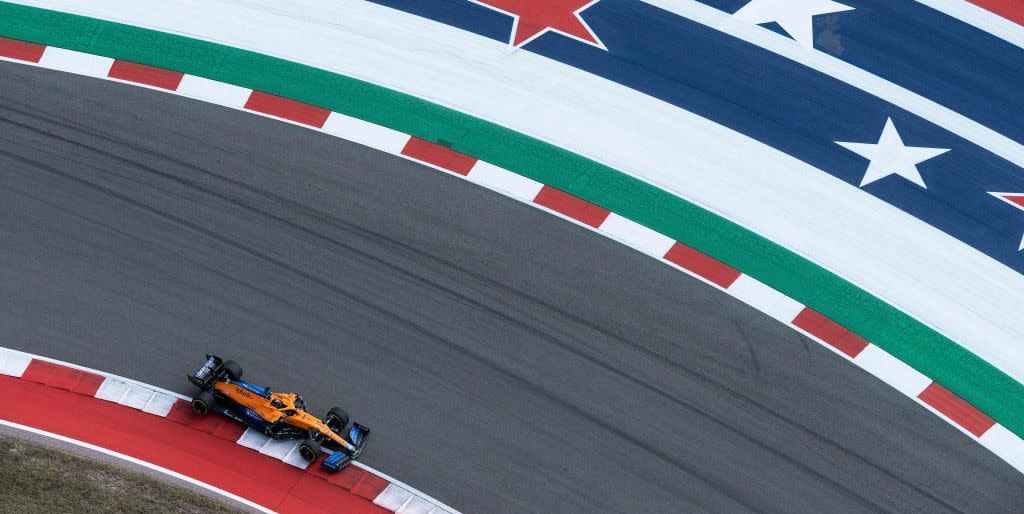Two American Formula 1 Races Are Enough

Next year Formula 1 will add a second United States Grand Prix to its calendar for the first time since 1984. It's the crowning achievement of an overwhelming success story in the U.S. for Liberty Media, a turnaround that saw what one of America's most niche sports blossom into a cult hit with a sizable, sustainable fanbase. That Miami race projects as an immediate success, but Liberty Media wants to stretch their American dreams even further. Paddock buzz seems to indicate a return to Las Vegas could be next, 36 years after a famous and confounding run of Grands Prix in the Caesar's Palace parking lot.
Unlike Miami, Las Vegas would be a mistake.
With just one race in the U.S., Formula 1 has reaped the benefits of domestic success. The grand prix in Austin was sold out a month in advance, and it acts as the in-person culmination of a year of anticipation. In a normal year, the media catches up with F1 all at once during a week designed to generate and maintain domestic buzz. In a year like this, with F1 audiences in the US as hungry as ever, we're seeing drivers make appearances on TV shows that would've never considered booking one before. The event atmosphere is palpable even if you aren't at the track, making Sunday a day every American Formula 1 fan looks forward to.
With two races, you divide that appeal. For fans, it means you can catch F1 cars racing in Miami if you can't get tickets this weekend. For Austin, it means losing some of the "the-circus-is-in-town" appeal to another market. The hope is that there's enough inertia to sustain two US Grands Prix. It looks promising, particularly at an exciting new venue like Miami.
But a third race divides that hype even further. While a race in Las Vegas would leave the physical markets spread out enough that the races would still draw healthy local crowds, the appeal of flying into an event from other parts of the country diminishes every time a new event is added. Sunday's sellout proves that demand won't be satisfied by a single race, but is it large enough to justify three? What about the other existing North American rounds in Canada and Mexico?
There is also the commercial element. Appearing in the U.S. allows F1 teams to appeal to North American sponsors, offering a convenient event to impress employees and partners once a year. Two more races mean two more chances for that kind of activation, increasing theoretical inventory in the U.S. for teams. However, they also mean lost chances for similar activations in other markets that may not be as diluted. For some teams, that could damage valuable revenue streams in markets more important to their business model.
Domestically, the shift to a less global F1 also erases some of the appeal for the companies that could join as sponsors or partners in much of the same way it hits fans. By making F1 a less global sport and making its place in the U.S. more consistent, the series loses some of the globe-trotting glamour that makes it so appealing to those brands.
Teams that have built their business models in part around activations in North America have already discovered ways to amplify those opportunities without added races in America. McLaren, for instance, has an IndyCar program integrated with their F1 program, allowing them to turn every existing IndyCar round into a potential event for their F1 team. That kind of synergy could be repeated in sports cars, where manufacturers like Alpine and Aston Martin have cars that are currently or will soon be eligible to compete in IMSA competition.
But the biggest drawback is the lost sense of exclusivity. By adding more races in the U.S., Liberty Media is diluting what makes the current US GP so special. As the current, exclusive home of the massively successful United States Grand Prix, the Circuit of the Americas is rapidly joining the canon of great American racing tracks. It is our own little satellite cathedral of European open wheel racing, a place designed for F1 cars that optimizes what makes the modern F1 car great. More street circuits cannot replicate that appeal, and, unless something changes, F1 seems completely uninterested in racing on any of the classic natural terrain courses that make up the IndyCar and IMSA schedules. This race is so exceptional because it is so singular. Spreading that appeal over two events hurts that enough. Stretching it over three may damage that beyond repair.
You Might Also Like

 Yahoo Movies
Yahoo Movies 
